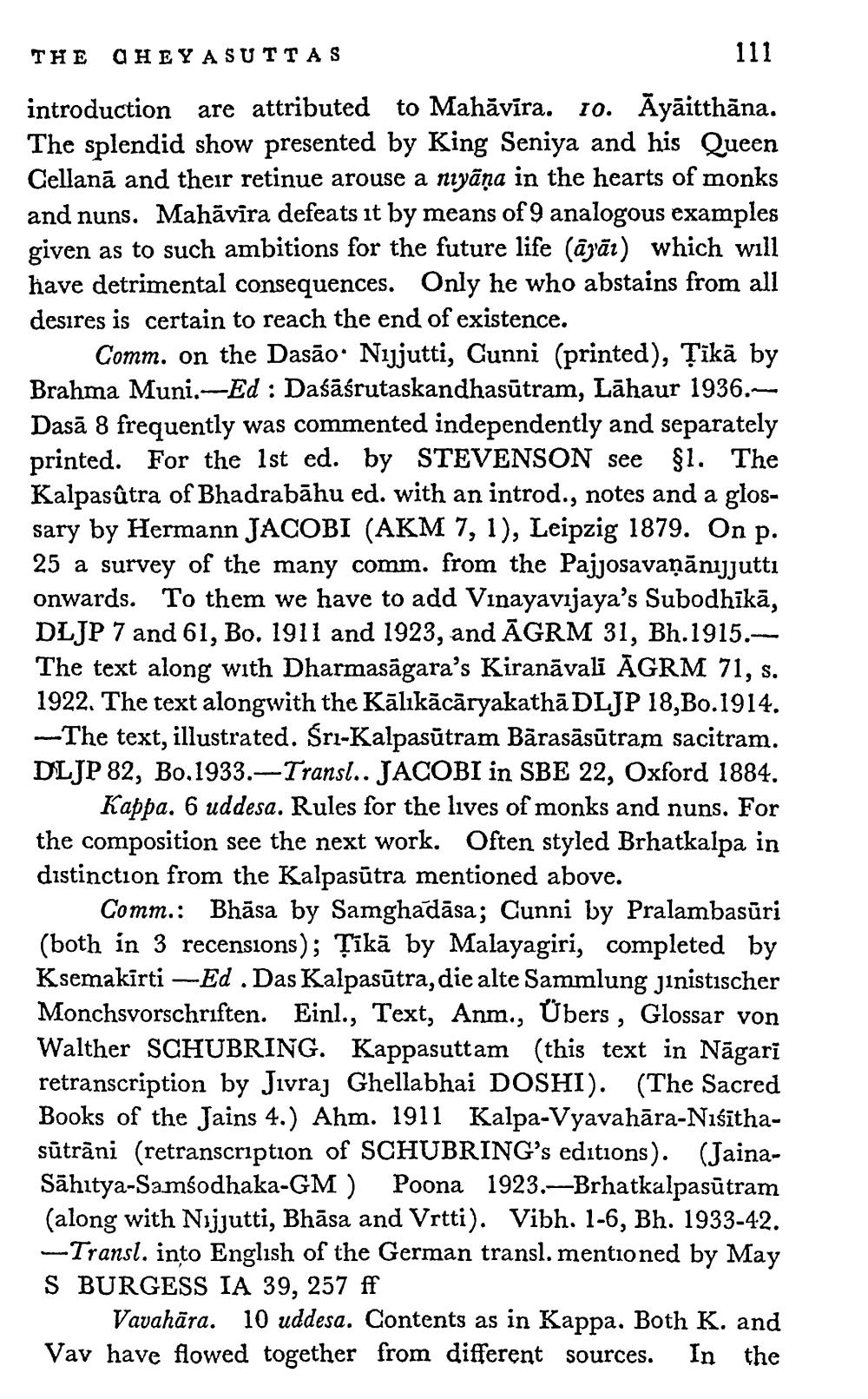________________
THE WHEY A SUTTAS
111 introduction are attributed to Mahāvīra. 10. Āyaitthāna. The splendid show presented by King Seniya and his Queen Cellanā and their retinue arouse a niyāņa in the hearts of monks and nuns. Mahāvira defeats it by means of 9 analogous examples given as to such ambitions for the future life (@pār) which will have detrimental consequences. Only he who abstains from all desires is certain to reach the end of existence.
Comm. on the Dasão. Nijjutti, Cunni (printed), Tikā by Brahma Muni.- Ed: Daśāśrutaskandhasūtram, Lāhaur 1936. Dasā 8 frequently was commented independently and separately printed. For the 1st ed. by STEVENSON see $1. The Kalpasûtra of Bhadrabāhu ed. with an introd., notes and a glossary by Hermann JACOBI (AKM 7, 1), Leipzig 1879. On p. 25 a survey of the many comm. from the Pajjosavaņānijjuttı onwards. To them we have to add Vinayavijaya's Subodhīkā, DLJP 7 and 61, Bo. 1911 and 1923, and ĀGRM 31, Bh.1915.The text along with Dharmasāgara's Kiranävali ĀGRM 71, s. 1922. The text alongwith the Kālikācāryakathā DLJP 18,B0.1914.
The text, illustrated. Sri-Kalpasūtram Bārasāsūtram sacitram. DLJP 82, Bo.1933.-Transl.. JACOBI in SBE 22, Oxford 1884.
Kappa. 6 uddesa. Rules for the lives of monks and nuns. For the composition see the next work. Often styled Brhatkalpa in distinction from the Kalpasūtra mentioned above.
Comm.: Bhāsa by Samghadāsa; Cunni by Pralambasūri (both in 3 recensions); sīkā by Malayagiri, completed by Ksemakīrti -Ed. Das Kalpasūtra, die alte Sammlung jinistischer Monchsvorschriften. Einl., Text, Anm., Übers, Glossar von Walther SCHUBRING. Kappasuttam (this text in Nāgarī retranscription by Jivraj Ghellabhai DOSHI). (The Sacred Books of the Jains 4.) Ahm. 1911 Kalpa-Vyavahāra-Nisīthasūtrāni (retranscription of SCHUBRING's editions). (JainaSāhitya-Samsodhaka-GM) Poona 1923.-Brhatkalpasūtram (along with Nijjutti, Bhāsa and Vrtti). Vibh. 1-6, Bh. 1933-42. -Transl. into English of the German transl. mentioned by May S BURGESS IA 39, 257 ff
Vavahāra. 10 uddesa. Contents as in Kappa. Both K. and Vav have flowed together from different sources. In the




